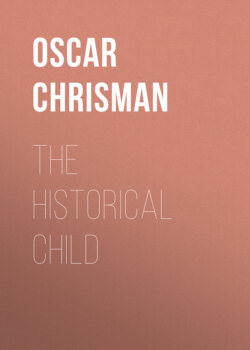Читать книгу The Historical Child - Oscar Chrisman - Страница 35
На сайте Литреса книга снята с продажи.
The People.
ОглавлениеTable of Contents
The ancient Egyptians, although in Africa, were not from African races but were of Asiatic descent, as the formation of their skulls, their features, their hair, and their language, show that they were of a Caucasian race. "The Egyptians appear to have been among the darkest races with which the Greeks of the early times came into direct contact.... The hair was usually black and straight. In no case was it 'woolly,' though sometimes it grew in short, crisp curls.... The forehead was straight, but somewhat low; the nose generally long and straight, but sometimes slightly aquiline. The lips were over-full; but the upper lip was short, and the mouth was seldom too wide. The chin was good, being well-rounded, and neither retreating nor projecting too far. The most marked and peculiar feature was the eye, which was a long, narrow slit, like that of the Chinese, but placed horizontally and not obliquely. An eyebrow, also long and thin, but very distinctly pencilled, shaded it. The coloring was always dark, the hair, eyebrows, eyelashes, and beard (if any) being black, or nearly so, and the eyes black or dark brown.
"In form the Egyptian resembled the modern Arab. He was tall; his limbs were long and supple; his head was well placed upon his shoulders; his movements were graceful; his carriage dignified. In general, however, his frame was too spare; and his hands and feet were unduly large. The women were as thin as the men, and had forms nearly similar. Children, however, appear to have been sufficiently plump; but they are not often represented."24
The people were divided into classes and although the separation of the classes was very marked and distinct, yet there was really no rigid caste system, as the boundaries were crossed by people ascending from a lower class into a higher. Of course, as with all people, it was quite customary for the son to take up the work of his father, but, at least, in some cases this was not compulsory. In one instance it is shown where the occupation of architect had descended from father to son for twenty-one generations. There is difficulty in knowing just what were the divisions of society but at any rate there were at least three distinct classes, which were the priestly class, the military class, and the rest of the people. The first two classes, from whom came the king, were exempt from taxation. The rest of the people had to bear the burden of the taxes, to construct the public works, to perform the agricultural tasks, and to carry on all mechanical and other pursuits. They had a hard time and yet the laws regarding them seem to have been justly administered and it would appear as if they were contented with their condition.
"The occupations of the common people in Egypt were carefully watched by the magistrate, and no one was allowed to live an idle life, useless to himself and to the community. It was thought right that the industrious citizen should be encouraged, and distinguished from the lazy or the profligate; and in order to protect the good and detect the wicked, it was enacted that every one should at certain times present himself before the magistrates, or provincial governors, and give in his name, his place of abode, his profession or employment, and the mode in which he gained his livelihood, the particulars being duly registered in the official report. The time of attendance was fixed, and those from the same parish proceeded in bodies to the appointed office, accompanied by their respective banners, and each individual being introduced singly to the registering clerks, gave in his statement and answered the necessary questions."25
